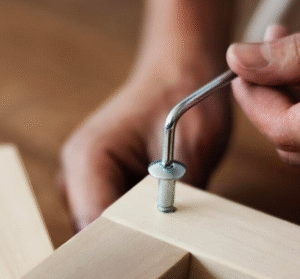Ever thought about how marketers and website designers from a top web design agency in new York make websites and social media posts look amazing and stunning with just a few colors and combinations?
Well, one common element that brings out the best in a design is gradients. Yes, the beautiful merging of colors that feels surreal. Considered as an outdated design practice, gradients have made a significant comeback in modern website design as a powerful avenue for adding substance, depth, energy and brand personality to digital user experiences.
Effective and efficient use of the gradient color design, be it a website page, a mobile app or any product interface, is proven to elevate user journeys, enhance brand strength and create visual assets that look top-notch and don’t overburden the interface. Knowing when and how to implement these gradients in modern website designs is what distinguishes a great brand from a good one.
The following article explores why gradients in web design trends matter, some top examples and the best practices of gradient design to inspire your next project.
Why Do Gradients Matter and Why Are They Back in Web Design?
To understand why gradients are back in web design, we first have to understand what modern website design trends look like. With the increasing popularity of minimalist website design, where not a lot of text and irrelevant info is provided, creative color gradients help in bringing out the true essence and zeal of the brand. Gradients are known to enrich the flat 2-tone colors of such interfaces in a very quirky manner. These gradients are dynamic in nature and adaptable by design, making them great for user-centric digital brands that value customer experience the most.
Thanks to better screens and modern CSS support, designers are now free to experiment with:
- Multi-tone gradients for depth and mood
- Animated gradients for modern interactions
- Glassmorphism & Neumorphism with soft light effects
- Brand gradients for logos and backgrounds
Some Top Gradient Color Design Examples
Stripe
Stripe’s public website and product dashboard center around using gradients to enhance simplicity and innovation. With their soft blue and purple gradients, Stripe speaks of clarity, modernity and trust, crucially important to align fintech brands.
Perhaps the most famous social media app, and a part of daily life now, Instagram is a trendsetter wherever it goes. The iconic and globally recognized Insta logo uses a pink-purple-orange gradient to accentuate its design and stand out as a visual checkpoint. Reflecting vibrancy, enthusiasm and youthful energy, Instagram has used this gradient style almost everywhere it can, be it loading screens, searches, posts &reels, splash pages, etc., and has established brand consistency across the app.
Linear
Linear is a project management tool that uses very subtle and clean gradient colors to enrich its user interface, without digressing from functionality. It offers a feeling of depth and focus to the web content by using dark-to-light gradients on their websites.
Adobe Creative Cloud
Adobe uses bold and colorful gradient overlays in campaign graphics and product branding. This reflects creativity and fluidity, speaking directly to designers and creators.
Apple
Apple is renowned for its minimalist website design and top-notch user experience. Apple aims to build futuristic web designs by adding appropriate gradients to their marketing and customer-focussing pages. These gradients are often merged with the images, establishing a sense of elegance and robust development. In fact, even the iPhone UI showcases some brilliant gradient color designs in the Dynamic Island, icons and wallpapers.
Gradient Color Design Best Practices
Align Gradients with Your Brand Identity
Don’t just pick pretty colors. Your gradients should reflect your brand tone—whether bold and energetic, or calm and professional. Consider:
- Warm gradients (orange, red, pink) = energy, creativity
- Cool gradients (blue, teal, purple) = trust, calm, tech-forward
- Muted gradients = sophistication, elegance
Test gradients alongside your typography and imagery to ensure consistency.
Use Gradients to Guide User Attention
Well-placed gradients can help focus the eye toward CTAs or important content.
- Use radial gradients behind buttons or forms to create focal points
- Linear gradients can direct the eye across a section
- Apply subtle hover effects with gradient transitions for interactivity
Avoid overpowering elements; gradients should enhance, not distract.
Choose the Right Gradient Type for Your UI
There are several types of gradients, each serving different visual goals:
- Linear gradients: Shift between two or more colors in a line (horizontal, vertical, diagonal). Great for banners and sections.
- Radial gradients: Radiate from the center. Useful for spotlight effects or highlighting.
- Conic gradients: Rotate around a point; great for charts or decorative accents.
Match the gradient type to your layout structure and user flow.
Keep Accessibility in Mind
Poor contrast is a common issue with gradients. Ensure that:
- Text placed over gradients has sufficient contrast (WCAG 2.1 compliant)
- Gradients don’t overpower UI controls or interfere with legibility
- Avoid too many bright colors that can cause eye strain
Use tools like Stark or Contrast Checker to verify visual accessibility.
Animate Gradients Sparingly
Subtle animation can add delight, like slowly shifting background hues, but keep it lightweight.
- Limit animations to hero sections or load screens
- Avoid distractions during key tasks or form inputs
- Test performance impact on mobile and lower-end devices
Examples: Stripe and Linear use gently animated gradients to create a polished, modern look.
Optimize for Performance
Gradients, especially animated or image-based ones, can impact load time.
- Prefer CSS gradients over gradient images whenever possible
- Compress background images with tools like TinyPNG or Squoosh
- Avoid layering gradients on top of videos or large media unless necessary
Fast-loading, lightweight gradients keep UX snappy and responsive.
Where to Use Gradients on Your Website
- Hero banners
- Call-to-action backgrounds
- Buttons and hover states
- Section transitions
- Mobile app splash screens
- Backgrounds for testimonials or product highlights
Done well, gradients add energy and emotion to these touchpoints.
Final Thoughts
Gradient color design, when used with purpose and restraint, can elevate your brand and digital presence. From subtle UI highlights to bold visual identities, gradients are web design trends that offer a versatile design language that works across industries and screen types.
As design trends continue to favor minimalism with personality, gradients will remain a go-to tool for businesses looking to balance clean interfaces with expressive visuals.
Whether you’re redesigning a landing page or building an entirely new brand identity, consider how a strategic use of gradients could amplify your message and engage your users. At Unified Infotech, we help businesses create visually stunning and performance-optimized web experiences. Want to explore how gradient design could fit into your next project? Let’s connect.
- Innovative Gradient Design: Top Examples & Best Practices For Your Business
- Discover the best practices in using innovative gradients in modern website design with real-world examples that elevate branding, UX, and visual storytelling.
- Gradient Design, UI/UX Best Practices, Web Design Trends, Creative Visual Design, Modern UI Elements
Related posts:
 High-Quality Biomedical Waste Incinerators & Laboratory Glassware Made in India
High-Quality Biomedical Waste Incinerators & Laboratory Glassware Made in India
 Understanding the Role of IoT in Modern Manufacturing: A Comprehensive Guide to Smart Factories and Industrial Transformation
Understanding the Role of IoT in Modern Manufacturing: A Comprehensive Guide to Smart Factories and Industrial Transformation
 Smarter Business Networks Start with a Cisco Solution Provider Partner
Smarter Business Networks Start with a Cisco Solution Provider Partner
 Best Account Management Software for All Businesses – EmizenTech
Best Account Management Software for All Businesses – EmizenTech
 Top 15 Global Website Design Companies You Can Hire in the 2025
Top 15 Global Website Design Companies You Can Hire in the 2025
 Empowering Qatari Retail Businesses with Microsoft Dynamics 365 Commerce
Empowering Qatari Retail Businesses with Microsoft Dynamics 365 Commerce
 How to Choose the Best Computer Repair Service for Your Needs
How to Choose the Best Computer Repair Service for Your Needs
 Android Mobile Application Development Services Named AIM: Building Smart Solutions for the Mobile-First World
Android Mobile Application Development Services Named AIM: Building Smart Solutions for the Mobile-First World







